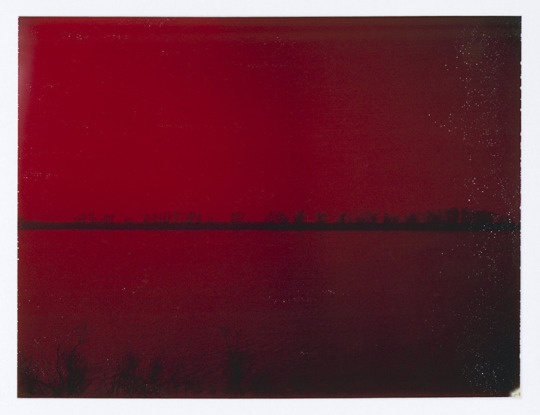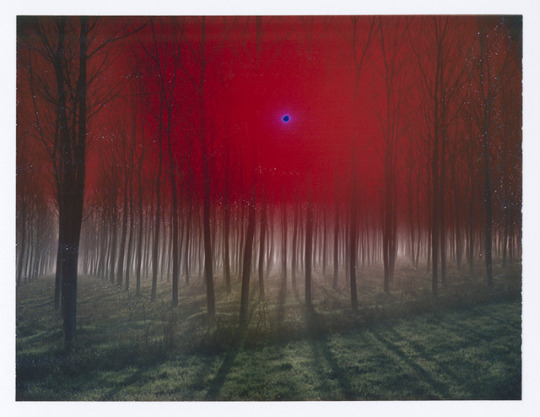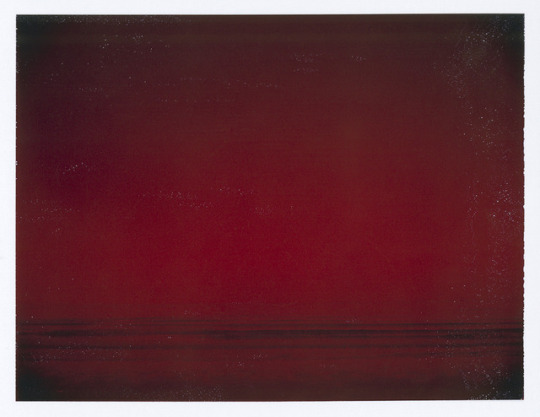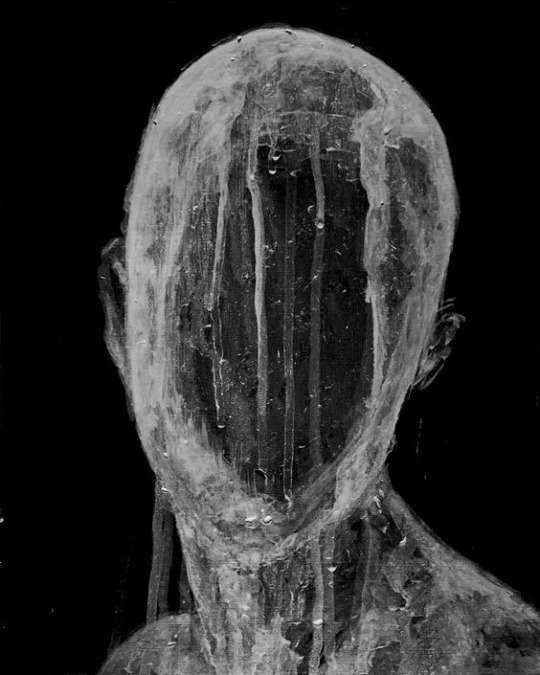Text
The Revolution Will Not Be Curated
I was with this for the entire time, reading it, taking it in, understanding what the author was putting across. It was then, hitting the last sentence, that the author matched what I was precisely thinking: “But in any such system, reader, people like you and me can be assured with almost perfect confidence that our voices will be curated out.”
We want things perfect. We don’t want to have to search for “the good stuff.” And while I think that this mindset is actually very millennial, it has spread to every corner of our daily lives, and the generations that came before us millennials have catered to it, generating revenue off of it. We DO have curated everything. Target creates their clothing set up to feel like you’re purchasing from small, boutique-like companies, making it feel like the items they sell have been curated to you, that this is a “special” experience.
However, what do we do when these “curators” are wrong? When the people we look to, to tell us what is good and what is not, are so far off from understanding what we want? On film review aggregate website Rotten Tomatoes, the 2018 film Venom boasts a whopping 29% rating from critics. The audience, on the other hand, has it as an 80% approval rating. That’s not just 5 or 10 percent, difference, it is a huge disconnect from understanding what people actually enjoy.
Curatorial practice in the art world is vastly different than this faux-curator experience many of us see day to day, and I think this affection with the term “curator” actually harms what real museum (to put it quickly) curators do.
0 notes
Text
The final project I’m going to talk about is the project I did with a member of my graduate cohort for another class. We formulated an alternate reality game, having created an alternate reality that was only slightly off from our own. It included the usage of physical materials, video, phone numbers, a scavenger hunt, websites, etc.
The goal was to create a virtual world that bled into our own, with the hope that it would instigate some thought about surveillance and also the idea of virtual worlds and how they can impact. It was also part experiment, with wanting to see how our cohort would react to their lives being invaded a little bit.
It was an ambitious, to say the least. We had initially come up with a slew of things to do and include, and then whittled it down to what we could do in the time span that we could.


It initiated by us creating and hanging fliers in the studio spaces.

Within one of the posters, a phone number was included. The phone number was active, and individuals were able to call the number. They would be greeted by an automatic response, that would send them to voicemail.
We then utilized this phone number to text our participants and got them to engage in another way. They were required to respond to the messages, and if they did not, or if they responded in an unfavorable way, we utilized that later on.
After a couple of days, we introduced the idea of a resistance in tandem with the release of the fictitious government agency’s website. The website can be visited here: www.usdoci.com



On the night before the final presentation, we, as the resistance, reached out to select people to hint at their to be involvement with them. This included the usage of email, text messaging, and a phone number (calling). This would lead them to a resistance website: www.abookisaloadedgun.com
On the day of the final presentation, everyone gathered where they received numerous physical materials, all packaged together. As a note, not all materials have been documented at this time, and the following photos do not accurately represent what was included.




What is missing is a know your rights pocket book, a mandatory health care form with perforated form, an advertisement for compulsory surveillance system installation, an envelope for the health care form, a dossier, and a log of their interactions with the government phone number.
At this point, four individuals were directed to leave the room as they required additional “reeducation.” This led them to a room where the resistance had intercepted, and gave them a task to do: interrupt the reintegration by locating a computer terminal and gaining access to it by locating the password. They found the password, but it was coded, requiring them to follow a simple caesar cipher to decode it.
After doing so, they were tasked with uploading a video to “the server” and then “interrupting/hacking” the broadcast, thus concluding the final day.
Below are the two videos, the first being the video that was interrupted, followed by the one that was used to interrupt:
https://www.youtube.com/watch?v=bFtSZxExnUs
https://drive.google.com/file/d/1bKd3Mbn16LPtinRaqBfDs0vrniBJeGH0/view?usp=sharing
0 notes
Photo



This semester culminated in mostly several short videos, and some ideas. While I feel it more important to talk about what I have ideas of, and less of what I have completed, I will include at the end of this post links to several of the finished videos; I will not include works that are not complete, or have the potential of being altered in the future due to critique received over the course of the last few months.
So first, I will discuss a concept I have for an installation piece, hesitantly titled The Neighbors I’ll Never Have. This corresponds to the first image above.
The Neighbors I’ll Never Have is a work where I will explore the ideas of voyeurism and surveillance, but a kind of negligent surveillance. That is, one we all partake in but never really realize we are enacting. I, personally, often find myself looking into the back lit windows of strangers, seeing their silhouettes move around, or just seeing a small snapshot of what they have in their home. We do not know who these people are, in most cases. We have no knowledge of them, and the only thing we can ever hope to scrape is the visual intimacy of staring into a stranger’s home. We can learn enough, maybe, but they still remain strangers. But we have an idea of someone that maybe no one else has, for it is within our homes that (ideally) we feel the safest.
Instead we are interlopers. Our eyes gazing upward into their security.
I aim to recreate this idea, building several windows where I will then project into them fabricated videos that are created in that same backlit manner that we see at night.
The second piece I have concept for is an installation based on a short passage from Bruce Schneier’s book Data and Goliath, in which he discusses the idea of the ephemeral conversation. The second two images above are what pertains to this.
The ephemeral conversation is a conversation that can go away, that can be forgotten. It is conversations we had ten years ago, or even a month ago. It can be left out of the mind, and therefore hard to recall.
With the advent of the computer, and the internet, and cellphones, it has become increasingly harder to have ephemeral conversations. Ours are no longer forgettable. We have them in writing, forever encoded online. In some database. In our email inboxes. We can forever return, and things can no longer be forgotten, generally speaking. And while yes, we still have many an ephemeral conversation, so many more happen online. A much larger percentage of our conversations happen where they are recorded.
In this untitled project, I aim to install a microphone into one room where I will invite individuals to speak into it. Ideally, they would then go and get lost looking at other things, essentially giving them time to forget that they had spoken into the microphone, and forget what they said.
So eventually they would come to a second room where what they said - and what others have said - would be layered upon one another. Forever looping. They would hear again what they said, and they would hear what others had said. The idea would be for them to also not realize at first that what they said was sent recorded and reproduced elsewhere. I would like to think that they would listen, trying to decipher what is being said, when they hear their voice, faintly. Barely recognizable. But there.
Videos:
i heard of a place
https://www.youtube.com/watch?v=PCmZjl5eOik
suffer.exe:
https://www.youtube.com/watch?v=hGYTcjy7zsE
i thought i saw a way:
https://www.youtube.com/watch?v=MMFYpU3lrOU
0 notes
Text
I have worked with the subject of surveillance for about two years now, give or take. Working through the idea of what is surveillance, and what it means to live in a country that has such a deep rooted system of surveillance. I have found myself longer in love with this idea, long before I ever looked at it in seriousness.
From video games to music, to film, to reading, the idea of an over arching power with eyes everywhere has webbed its way through every major interest. Watch Dogs, a game by Ubisoft, centers itself around guerilla efforts of taking down a city wide surveillance system by means of hacking and disrupting efforts - the likes of what Edward Snowden stated about the capabilities of the NSA. Nine Inch Nails created a concept album with an entire weaving storyline, fitted with dozens of websites and a handful of real world events, circling the ideas of a theocratic regime that keeps a tight eye over it’s citizens. 1984, which needs no explanation.
While I have some ideas for projects, some more fleshed out than others, I’m left wanting to wait on posting them until I get ideas more concretely laid out with what I plan on doing with them. In the meantime, I have at least compiled a list of books that I plan on purchasing so that I can research more aspects of surveillance and how it impacts us as individuals.
The books are...
The Rise of Big Data Policing: Surveillance, Race, and the Future of Law Enforcement by Andrew Guthrie Ferguson
The Fourth Amendment in an Age of Surveillance by David Gray
The Known Citizen: A History of Privacy in Modern America by Sarah E. Igo
No Place to Hide: Edward Snowden, the NSA, and the U.S. Surveillance State by Glenn Greenwald
Data and Goliath by Bruce Schneier
Dragnet Nation by Julia Angwin
Beyond Snowden by Timothy H. Edgar
I also plan on using this blog as a way to post images that have some relative inspirational aspect to me, whether it be by content or color or some other graphical/artistic nature to them. A kind of look book, I guess.
1 note
·
View note
Photo


Where the Night Ends, 2018 Ink on paper 6 in x 8 in
instagram
432 notes
·
View notes
Photo

Martino Zegwaard - Abandoned greenhouse in castle.
178K notes
·
View notes
Photo

We reap what we sow.
Want to help support my art? You can at my webstore at this link!
2K notes
·
View notes













